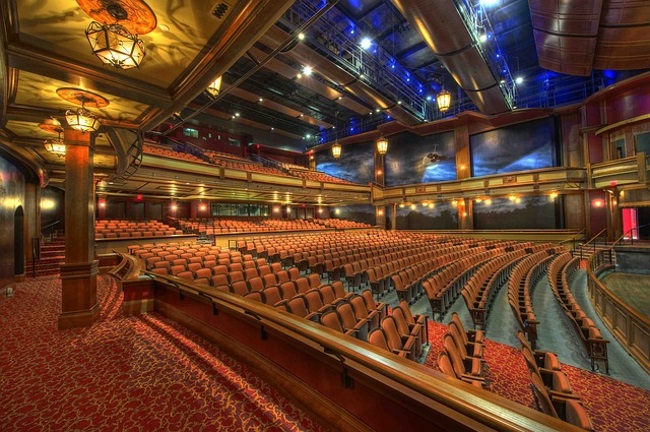Auditoriums are large event spaces that serve a host of different applications. From a designing and integrating standpoint, they are one of the most complex types of room environments. The main aim of auditorium design is to ensure that each audience member has an immersive experience. Most auditorium events are done on a large scale and in a public setting.
Hence it is crucial to ensure that the event organisers and administrators have access to powerful tools to control the various aspects of the event. This usually includes aspects such as sound, lighting, drapes, visual displays, and cameras etc. Keeping in mind their size and scale of scenarios, the modern auditorium ought to be equipped for easy management.

All this must happen smoothly. The technology must be intuitive for administrators to set up and run the event with minimal effort. Audio design and engineering are key aspects of auditorium design. It has the greatest impact on audience experience. The auditorium must be acoustically treated. The auditorium sound system design must factor in the acoustics and noise level of the room.
A Floor or Stage Box with many audio and video inputs must available. It is often necessary for the administrator/technician managing the event to make adjustments from positions apart from the AV booth. Sound levels can vary at different locations in the space. This will require adjustments to the sound mix, lighting, and video switching etc. to be adjusted while the hardware is in other parts of the room. Administrators will find it easier to adjust the AV and automation settings via mobile devices integrated with software controls.
Visibility of the stage and the screen has to be excellent. Ensure a clear line of sight. It can be done with sloped floors and staggered seating. Make sure the screen height (diagonal) is at least 1/6th of the distance between the screen and the last row. Any smaller and the visibility of the screen content will be compromised for the audience at the back. A high-resolution Full HD or 4K display or video wall or a high brightness projector are key elements for great visuals.
Centralised control via touch-based controllers is necessary for easy control of the system in the high-pressure environment that high-profile live events inevitably create. These automation control systems can be integrated with almost any electronic or electrical system. They can HVAC, sound systems, AV devices, lighting, drapes, projectors, screens, cameras, and video conferencing systems etc.
Mechanical systems noise control and vibration isolation is very important in the auditorium environment because of HVAC noise and mechanical noise from other systems impact room acoustics, structural vibration, and exterior noise levels. A systematic noise measurement study by a professional is needed to decide on modifications to decrease the impact of noise sources.
Often, events in these spaces are live-streamed or recorded for later use. So lighting is key. Stage lighting is a great tool for ensuring visibility and setting the right mood. It enhances the aesthetics of the setting. It is crucial in live performance situations such as plays or musical events. Floodlights, spotlights, wash lights, scanners, moving heads, and lasers come together to form your lighting system. They can be programmed and managed remotely with a digital DMX mixer. Displays running digital signage can advertise upcoming events in the auditorium or even serve as a great tool to manage the movement and flow of the visitors.
Easy Tips for Auditorium Design and Integration,




